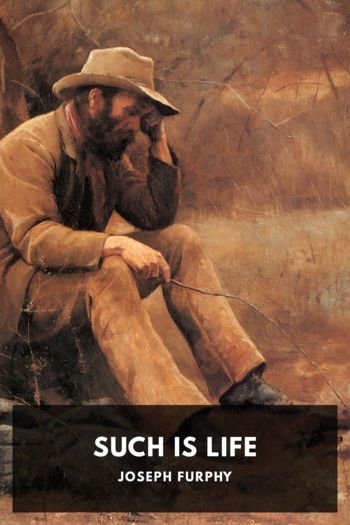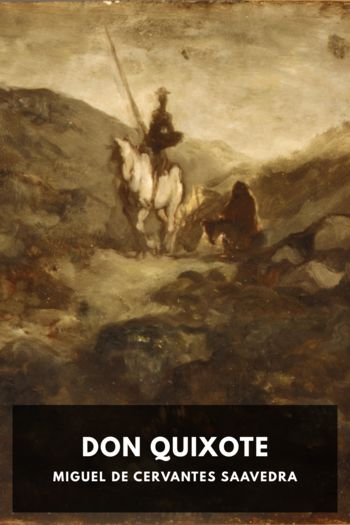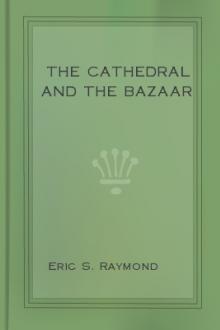Such Is Life, Joseph Furphy [online e book reading txt] 📗

- Author: Joseph Furphy
Book online «Such Is Life, Joseph Furphy [online e book reading txt] 📗». Author Joseph Furphy
“You have a lot to be thankful for,” I remarked.
“Blessed be His Name!” thought Rory aloud; and I continued, “You must make up your mind to send her away to school in another four or five years.”
“Iv coorse,” replied Rory sadly.
“A convent school, mind. None of your common boarding schools for a child like Mary.”
Rory’s only reply was a glance of gratitude. My stern admonition would be a moral support to him in the coming controversy.
“You mentioned some other literary work that you have on hand?” I remarked inquiringly.
“Yis; A’ve jotted down a few idays. Now, Tammas—where was the Garden of Aden supposed to be?”
“My word, Rory, if a man could only disclose that to the world, he would command attention. However, one theory is that it was on the lost continent of Atlantis; another, that it was in the Valley of Cashmere. There are many other localities suggested, but I think the one which meets most favour is the Isle of Kishm, in the Straits of Ormuz, at the entrance to the Persian Gulf.”
“Will ye repate that, Tammas, iv ye plaze.”
I briefly rehearsed such relevant information as I possessed, whilst Rory kidnapped the geographical names, and imprisoned them in his notebook, trusting to his memory for the rest.
“Oul’ Father Finnegan, at Derryadd, useteh argie that the Garden iv Aden hed been furnent the Lake o’ Killarney; an’ no one dar’ conthradict him,” he remarked, with a smile. “But people larns till think fur theirselves when they’re out theyre lone. An’ afther consitherin’ the matter over, A take this iday fur a foundation: The furst Adam was created in a sartin place; then he sinned in a sartin place. An’ when the Saviour (blessed be His Name!) come fur till clane the wurrld o’ the furst Adam’s sin, He hed till be born where the furst Adam was created; an’ He hed till die where the furbidden fruit was ait. An’ A’ve gethered up proofs, an’ proofs, an’ proofs—How far is it fram Jerusalem till Bethlehem, Tammas?”
“Nearly six miles.”
“A knowed the places must be convanient. Now ye mind where the Saviour (blessed be His Name!) says, ‘all the blood shed on earth, fram the blood iv righteous Abel’—and so on? Well, ‘earth’ manes ‘land’; an’ it’s all as wan as if He said, ‘shed on the land.’ An’ what land? Why, the Holy Land. An’ the praphets lived there when the Fall was quite racent; an’ hear what they say:—”
(Here he gave me some texts of Scripture, which I afterward verified—and I would certainly advise you to do the same, if you can find a Bible. They are, Isaiah 51:3; Ezekiel 28:13–31:9–18–36:35; Joel 2:3.)
“Rory, you’re a marvel,” I remarked with sincerity. “And, by the way, if there’s anything in the inspiration of Art—if the Artist soars to truth by the path which no fowl knoweth—your theory may find some support in the fact that it was a usage of the Renaissance to represent the skull of Adam at the foot of the cross.”
“Ay—that!” And Rory’s notebook was out again. “Which artists, Tammas?”
“Martin Schoen—end of 15th century, for one. Jean Limousin—17th century—for another. Albert Dürer—beginning of 16th century—in more than one of his engravings. However, you can just hold this species of proof in reserve till I look up the subject. I won’t forget.”
“God bless ye, Tammas! Would it be faysible at all at all fur ye till stap to the morrow mornin’, an’ ride out wi’ me the day?”
“Well—yes.”
“Blessin’s on ye, Tammas! Becos A’ve got four more idays that ye could help me with. Wan iday is about divils. A take this fur a foundation: There’s sins fur till be done in the wurrld that men ’on’t do; an’ divils is marcifully put in the flesh an’ blood fur till do them sins. ‘Wan iv you is a divil,’ says the Saviour (blessed be His Name!). ‘He went to his own place,’ says Acts—both manin’ Judas. An’ there’s a wheen o’ places where Iago spakes iv himself as a divil. An’ A’ve got other proofs furbye, that we’ll go over wan be wan. It’s a mysthery, Tammas.”
“It is indeed.” Whilst replying, I was constrained to glance round at the weather; and my eye happened to fall on the creeper-laden pine, a quarter of a mile away. Suddenly a strange misgiving seized me, and I asked involuntarily, “Do you have many swagmen calling round here?”
“Nat six in the coorse o’ the year,” replied Rory, too amiable to heed the impolite change of subject. “Las’ time A seen Ward,” he continued, after a moment’s pause, “he toul’ me there was a man come to the station wan mornin’ airly, near blin’ wi’ sandy blight; an’ he stapped all day in a dark skillion, an’ started again at night. He was makin’ fur Ivanhoe, fur till ketch the coach; but it’s a sore ondhertakin’ fur a blin’ man till thravel the counthry his lone, at this saison o’ the year. An’ it’s quare where sthrangers gits till. A foun’ a swag on the fence a week or ten days ago, an’ a man’s thracks at the tank a couple o’ days afther; an’ the swag’s there yit; an’ A would think the swag an’ the thracks belonged till the man wi’ the sandy blight, barr’n this is nat the road till Ivanhoe.”
“My word, Rory, I wish either you or I had spoken of this when you came home last night. Never mind the horses now. Give me your bridle, and take Mary on your back.”
As we went on, I related how I had seen the man reclining under the tree; and Rory nodded forgivingly when I explained the scruple which had withheld me from making my presence known.
“He must ’a’ come there afther ten o’clock yisterday,” observed Rory; “or it would be mighty quare fur me till nat see him, consitherin’ me eyes is iverywhere when A’m ridin’ the boundhry.”
“But he wasn’t near the





Comments (0)